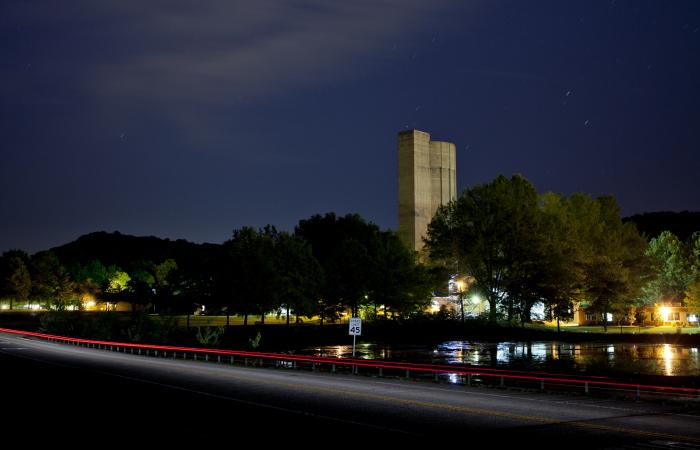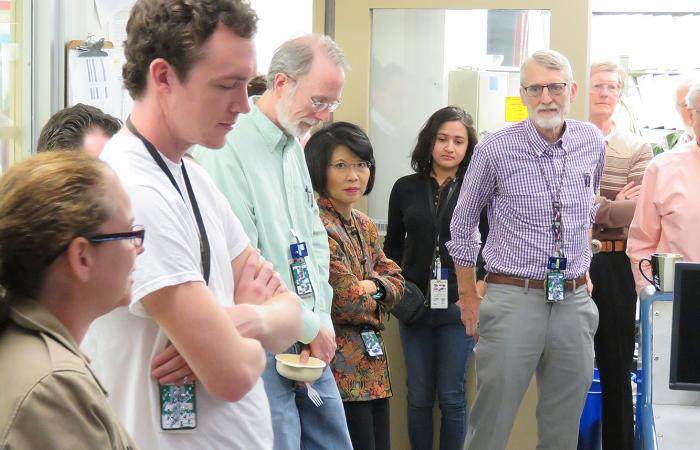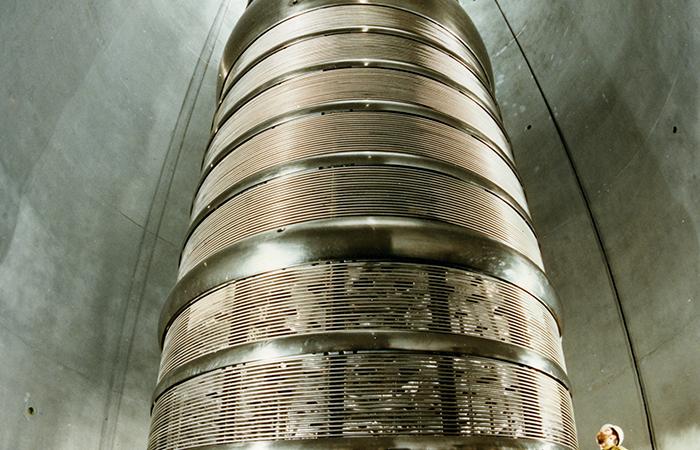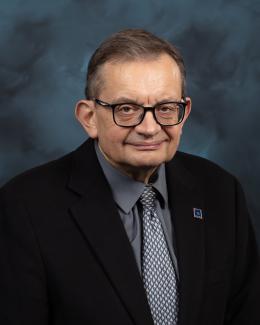May 9, 2016 – Oak Ridge National Laboratory's 25-megavolt Tandem Electrostatic Accelerator received an opportunity for one last hurrah in a series of experiments that ended in late March, nearly four years after the Holifield Radioactive Ion Beam (RIB) Facility at the Department of Energy national laboratory ceased operations.
The stand-alone tandem is housed in the silo-shaped tower that dominates the ORNL east campus skyline. It was reconfigured with the Oak Ridge Isochronous Cyclotron in the mid-1990s to the Holifield RIB Facility to produce radioactive ion beams with unique experimental capabilities, particularly for nuclear structure and astrophysics.
The RIB facility was placed in shutdown status in April 2012, which coincidentally marked ORIC's 50th year of operations. In the meantime the tandem has been operated on its own intermittently for targeted experiments during the disposition of the RIB facility.
Most recently the DOE Office of Science's Office of Nuclear Physics funded radioactive decay studies of fission products that are abundant during the nuclear fuel cycle. The tandem accelerated protons onto a uranium-238 target; then the Physics Division researchers led by Krzysztof Rykaczewski and Robert Grzywacz studied the activated nuclei to obtain improved data on the processes occurring during a nuclear fuel cycle.
Another series of tandem experiments that ended last September was aimed at improving detection technologies for nuclear safeguards. With the new nuclear data researchers around the world will have better detector technologies that, for example, can judge the amount of radiological materials in a sealed container.
"We'll publish these results. There are people who would like the new data now," the Physics Division's Michael Smith said.
Besides being an ORNL landmark, the tandem has been a record holder. It once generated an electrostatic voltage of 32 million volts during a 1979 test run, which still could be the highest voltage ever produced by a man-made device. The tandem could operate routinely above 20 million volts, the highest in the world, says Physics Division Accelerator Systems Group Leader Alan Tatum, and beam has been delivered for experiments as high as 25.5 million volts.
None of the experiments affected the ongoing shutdown activities of the RIB facility. With the conclusion of the last round of research in late March, the accelerator's pressurized sulfur hexafluoride gas, which acts as a high-voltage insulator, will be removed and the tandem will be dispositioned.
Physics Division staff marked the end of the tandem's recent run with a short ceremony on March 31.
“It was a bittersweet moment with the outstanding accelerator performance and world-class science being tempered by the reality that the tandem may have been operated for the last time,” Tatum said.
UT-Battelle manages ORNL for the DOE's Office of Science. The Office of Science is the single largest supporter of basic research in the physical sciences in the United States, and is working to address some of the most pressing challenges of our time. For more information, please visit http://energy.gov/science/.






